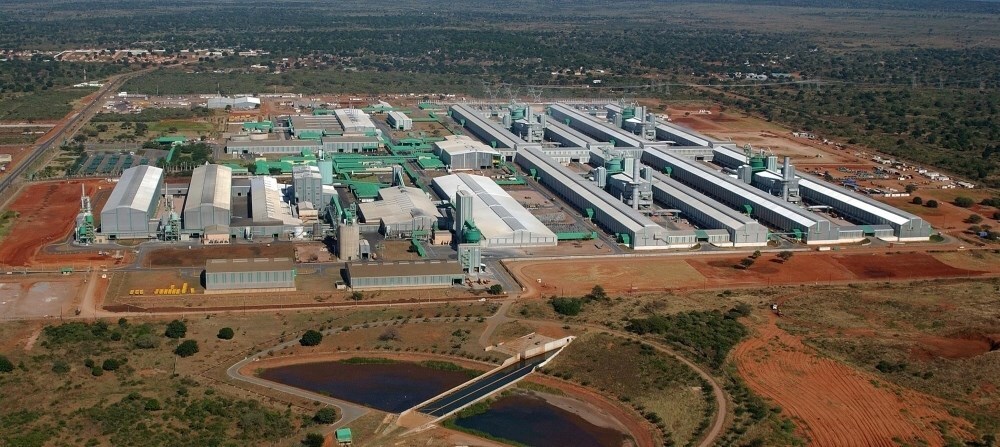

Australia’s South32 is currently in talks with the Mozambican government about the future of Mozal, which is the largest aluminium smelter and a key industrial employer in the country. Even with these discussions underway, the company is preparing for a potential halt in operations starting in March, 2026.

Recent development
South32 has announced that it’s actively working with the Mozambican government, the Cahora Bassa Hydroelectric Plant (HCB) and South Africa’s Eskom, which buys electricity from HCB and supplies it to Mozal, to ensure that Mozal, the second-largest aluminium smelter in Africa, has enough affordable power. This facility, located just outside of Maputo, employs around 5,000 workers.
South32, in its quarterly report released on Tuesday, October 21, noted that despite ongoing efforts, negotiations have not progressed enough to guarantee that Mozal Aluminium will have a steady and affordable electricity supply after March 2026. The company also mentioned that if the necessary power is not secured, it may have to go into care and maintenance once the current agreement wraps up.
The start of the plan
Back in July 2025, South32 revealed its plans to put the Mozal Aluminium Smelter in Mozambique on care and maintenance starting in March 2026, primarily due to ongoing power supply challenges. After six years of discussions with the Mozambican government, Hidroeléctrica de Cahora Bassa (HCB) and Eskom, the firm has not been able to secure a sustainable and affordable electricity deal. The current power supply agreement is set to run out in March 2026 and without a solid alternative, the company is taking a hard look at the smelter's long-term future.
Moreover, the firm has also indicated a possible impairment charge in its FY25 financial results, highlighting the increasing uncertainty surrounding the smelter's operations. Additionally, worsening drought conditions have made it even tougher for HCB to produce enough hydroelectric power, raising further concerns about the reliability of the electricity supply. Consequently, the firm is pulling back on its investment in Mozal, stopping pot relining activities and letting go of related contractors starting this month. The expected power supply limitations are likely to cut output down to about 240,000 tonnes in FY2026.
Fast-forward to August 2025
In August 2025, the firm announced it was cutting back its investment in Mozal, pausing pot relining activities and letting go of associated contractors. The expected power supply limitations are likely to bring production down to about 240,000 tonnes in FY2026. Additionally, the company has indicated a possible impairment charge of USD 372 million for Mozal in FY2025, highlighting the increasing uncertainty surrounding the smelter's future. Located just 20 km west of Maputo, Mozal employs around 5,000 workers and has been a crucial investment for the region, significantly contributing to Mozambique's economic recovery after years of unrest.
Any impact on Q3?
The firm's recent report on its Q3 2025 performance highlights that Mozal’s saleable production increased by 3 per cent, reaching 93,000 tonnes in Q3 2025 compared to the previous quarter, with the smelter running close to its maximum technical capacity. This uptick occurred just before the August decision to pause pot relining due to uncertainties surrounding electricity supply beyond March 2026. Nevertheless, the production forecast for FY2026 is still set at 240,000 tonnes, provided that operations continue until the current power agreement comes to an end.
Also read: Mozal retreat clouds outlook, but Worsley Alumina & GEMCO may reignite South32’s growth story
Energy crisis & government’s take
The energy issues at Mozal have led to the cancellation of contracts with around 20 supplier companies, affecting at least 1,000 workers, as reported by the Confederation of Economic Associations of Mozambique (CTA). The government has acknowledged that Mozal’s tax contributions are “extremely low” and is planning to reassess its fiscal responsibilities. This smelter uses nearly half of Mozambique’s electricity output and accounts for about 3 per cent of the nation’s GDP.
Mozal gets its electricity from Eskom, which sources 66 per cent of its total production from the Cahora Bassa Hydroelectric Plant located in central Mozambique. However, the government has revealed plans to reclaim this power for local use starting in 2030, as part of its National Energy Transition Strategy that extends through 2050.
Get your hands on one of our best-selling reports on "Aluminium Dross Processing: A Global Review"
Responses








